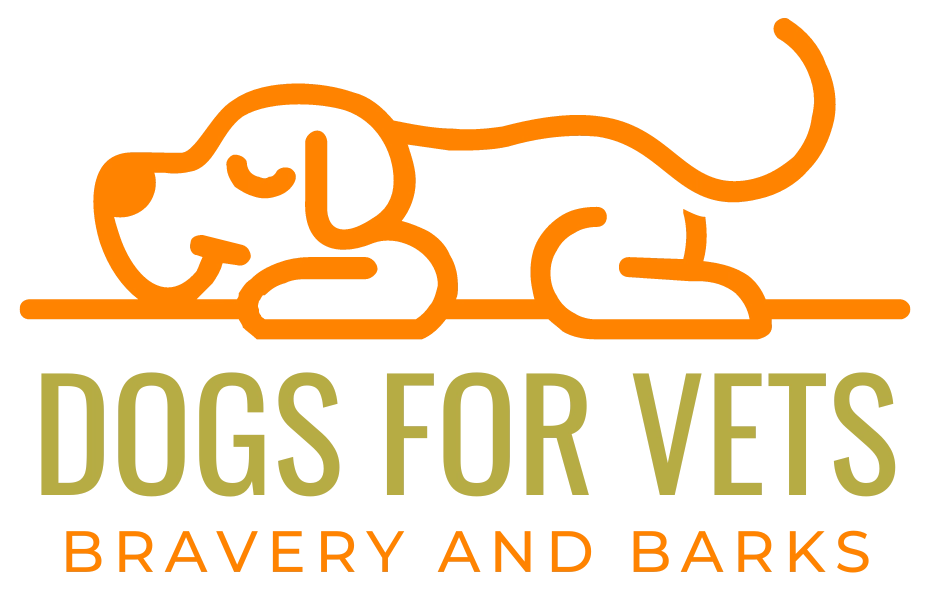This post may contain ads and affiliate links and we may earn a small commission when you click on the links at no additional cost to you. As an Amazon Affiliate, we earn from qualifying purchases. You can read our full disclaimer here.
Golden Retriever Feathers: From Puppy to Adult, a Coat Transformation
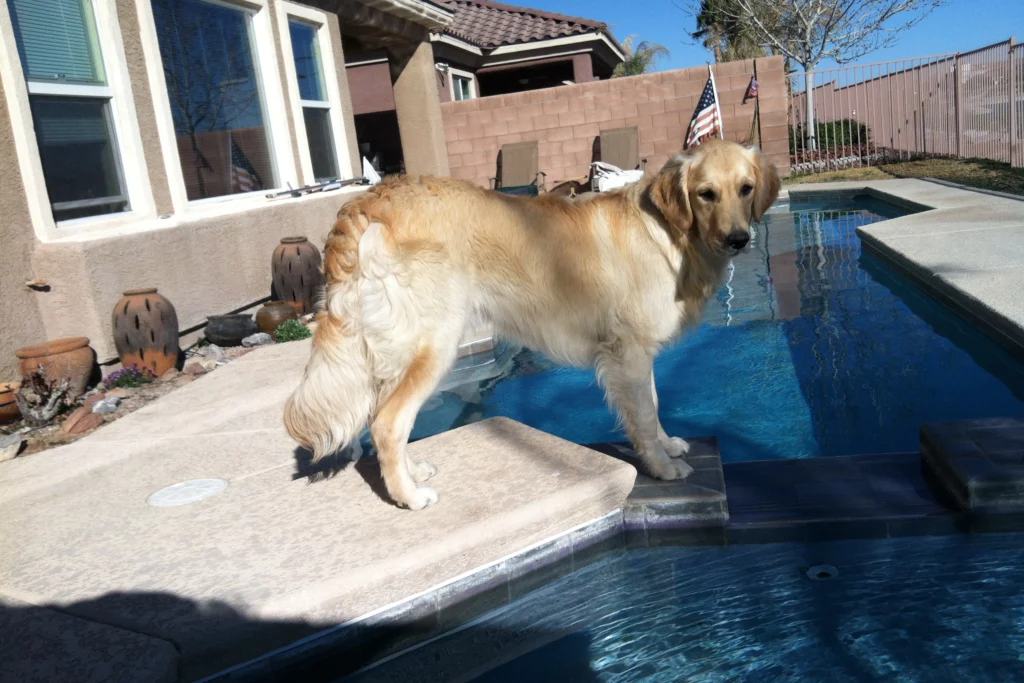
The charm of Golden Retriever feathers is truly unique. Soft, billowing, and beautifully golden, they frame these lovable dogs like a halo of sunshine.
They’re not just a feast for the eyes but a tactile delight, too – there’s something irresistibly comforting about running your hands through their plush, feathery coats.
In this post, we’re embarking on an exciting journey, diving deep into the world of Golden Retrievers and their majestic feathers.
We’ll talk about what these feathers are and how they transition as your furry friend grows from a playful puppy into a regal adult.
We’ll share helpful tips on grooming – whether to trust the professionals or take on the mantle at home.
Plus, we’ll guide you through the seasonal care to keep those feathers looking tip-top whatever the weather.
Understanding Golden Retriever Feathers
What Are Golden Retriever Feathers?
First things first, let’s clear up what we mean when we say ‘feathers.’
In the context of Golden Retrievers, ‘feathers’ refer to the longer sections of fur on specific parts of their bodies.
These fluffy and often wispy areas are typically found on:
- The underside of their tail
- Back of their front legs (often called the fringes)
- Back of their thighs
- Beneath their belly
The feathers add an extra layer of glamour to these already majestic creatures, enhancing their regal appearance.
But the feathers aren’t just for show; they also serve functional purposes such as providing extra insulation.
The Early Years: When Do Golden Retrievers Get Their Feathers?
Golden Retrievers are born with a short, soft coat that is not yet feathered. As your little fur-ball grows, you’ll start to notice some changes in its coat.
The appearance of feathers is a sign that your puppy is moving into the next phase of life.
- Around 4-6 Months: This is when you’ll first begin to see the initial signs of feathering in most Golden Retrievers. This tends to start with slight feathering on the legs and tail, but the fur remains relatively short.
- Around 8-10 Months: At this stage, your Golden Retriever’s feathers will start to become more noticeable. The fur will begin to grow longer on their tail, legs, chest, and belly. You’ll see the fringes on their legs becoming more defined, and their tail will start to develop a fuller, plume-like appearance.
- From 1 Year Onwards: Your Golden Retriever will continue to develop feathers throughout its first year. By the time they are a year old, their feathers should be quite pronounced. However, Golden Retrievers don’t typically develop their full adult coat with complete feathering until they are about 18 months to 2 years old.
Golden Retriever Feathers Over Time. Puppy to Adult.
Here’s a fun series of photos of our treasured Golden, Daisy! Check out that feather progression.
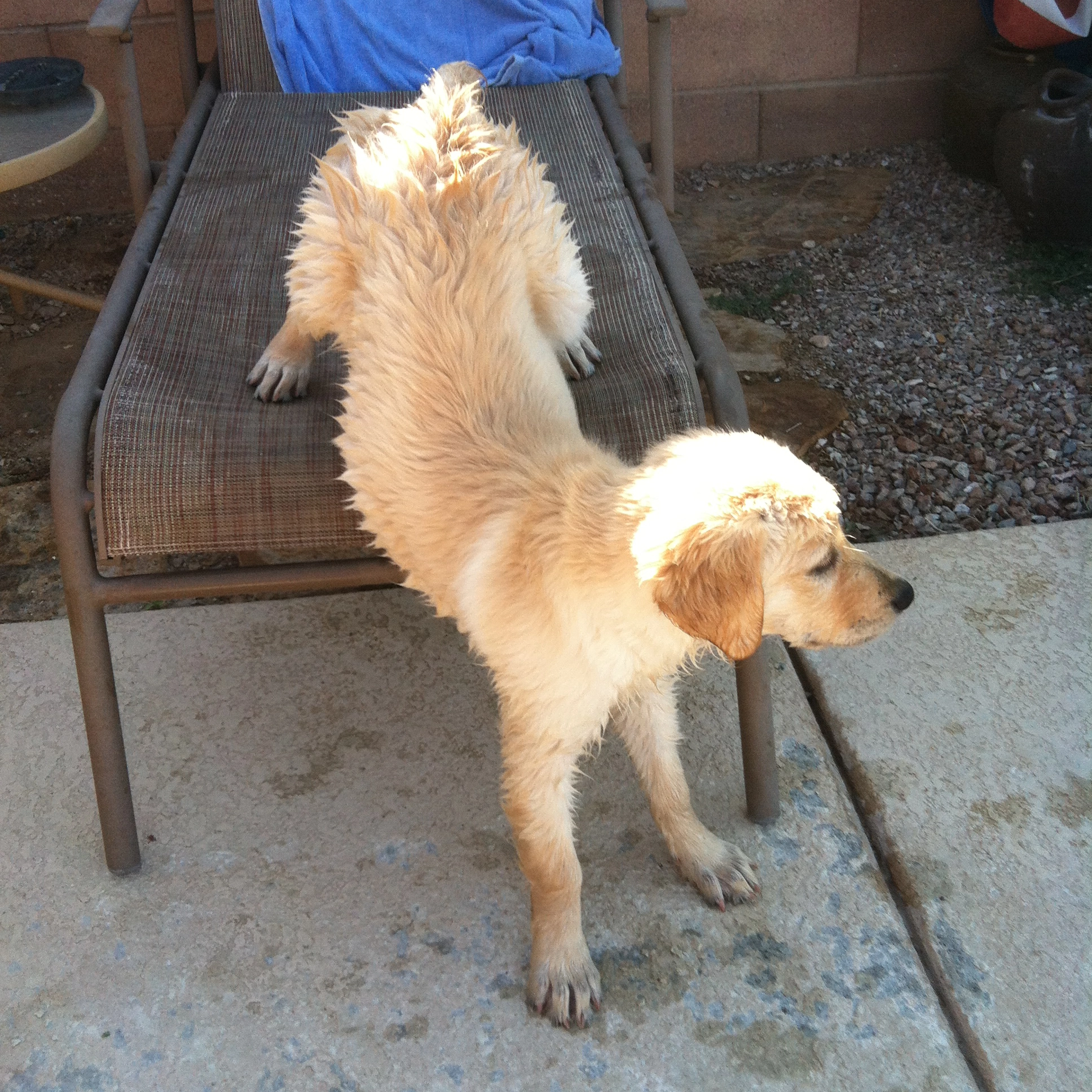
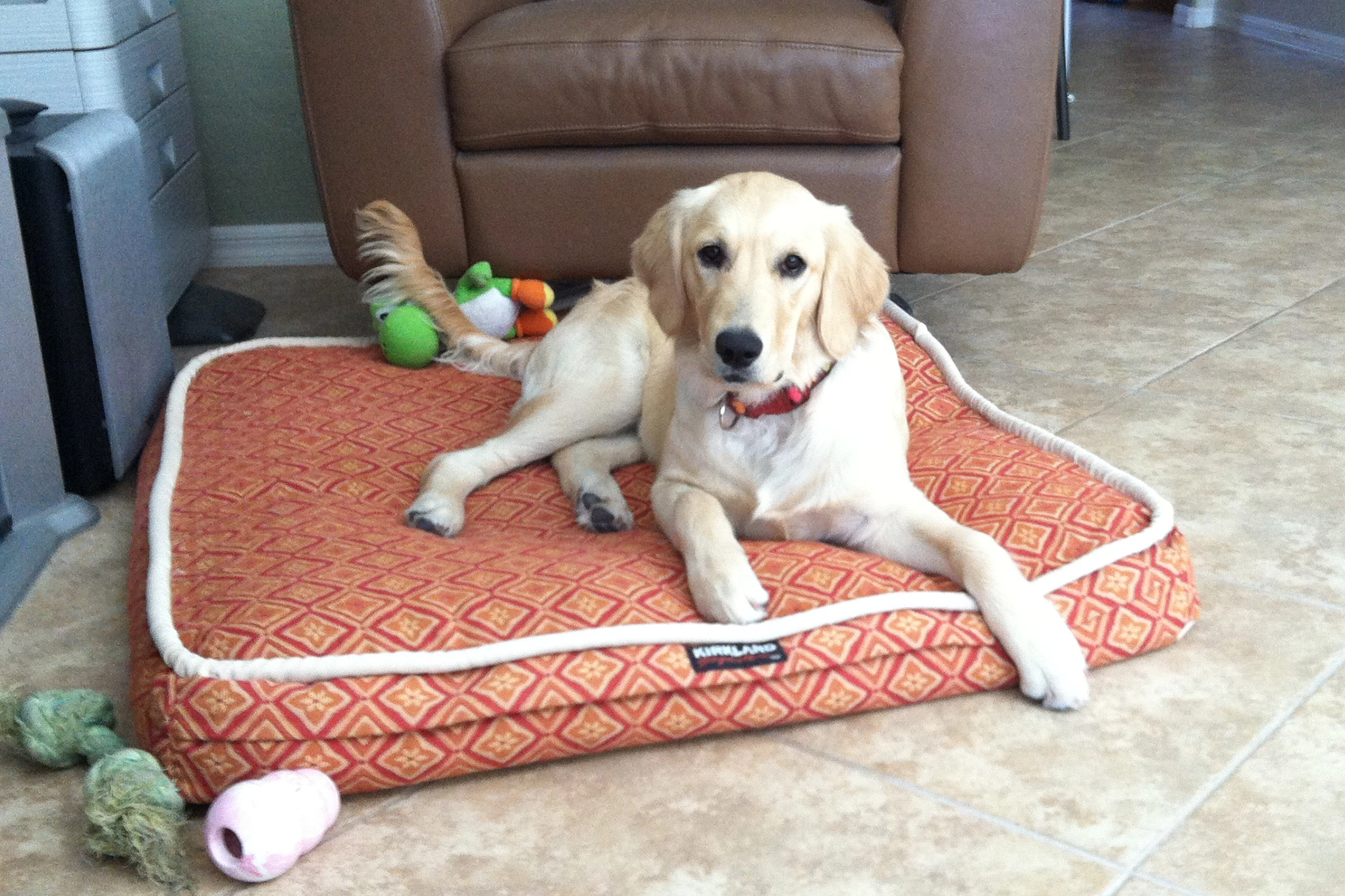
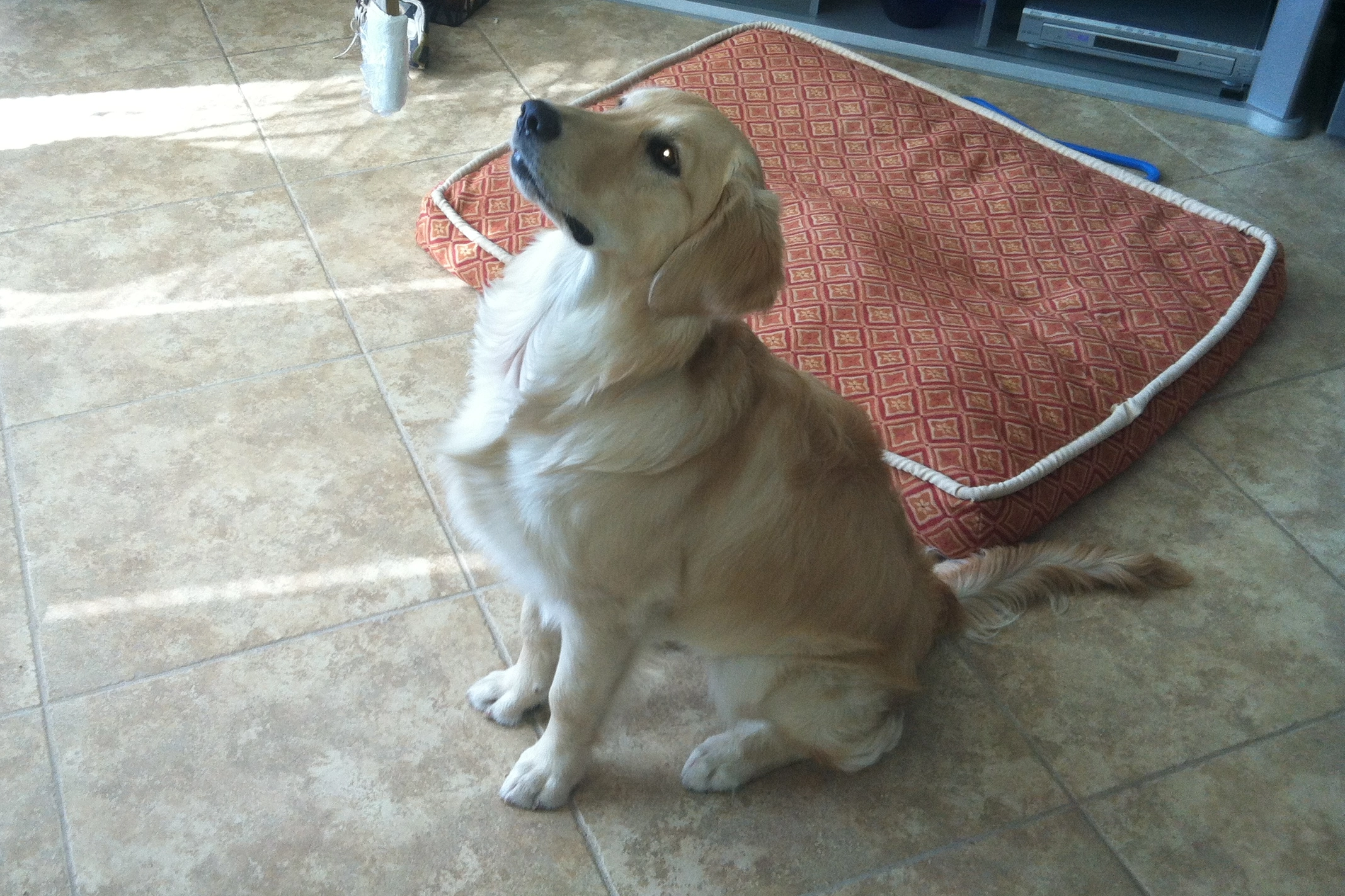
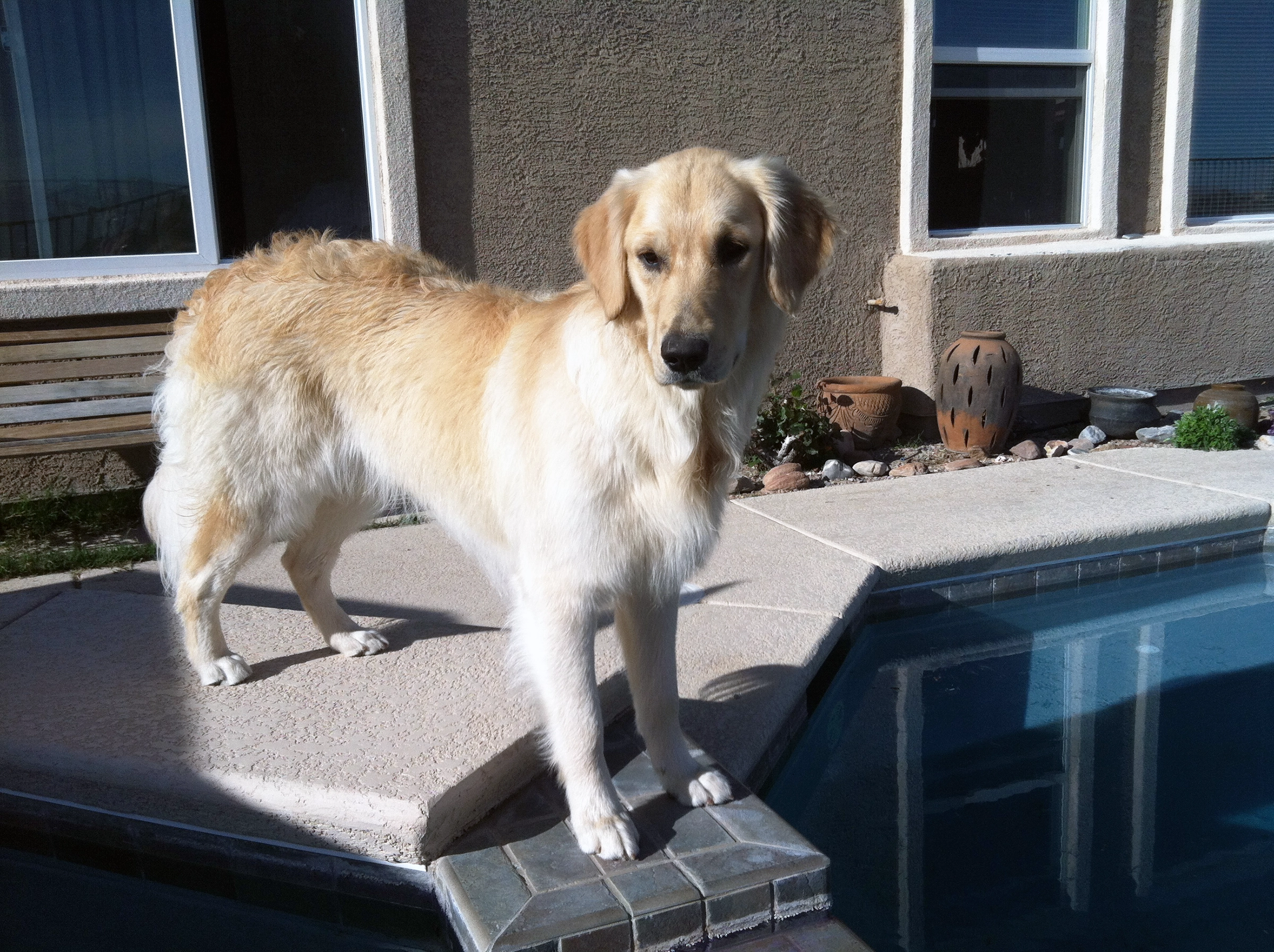
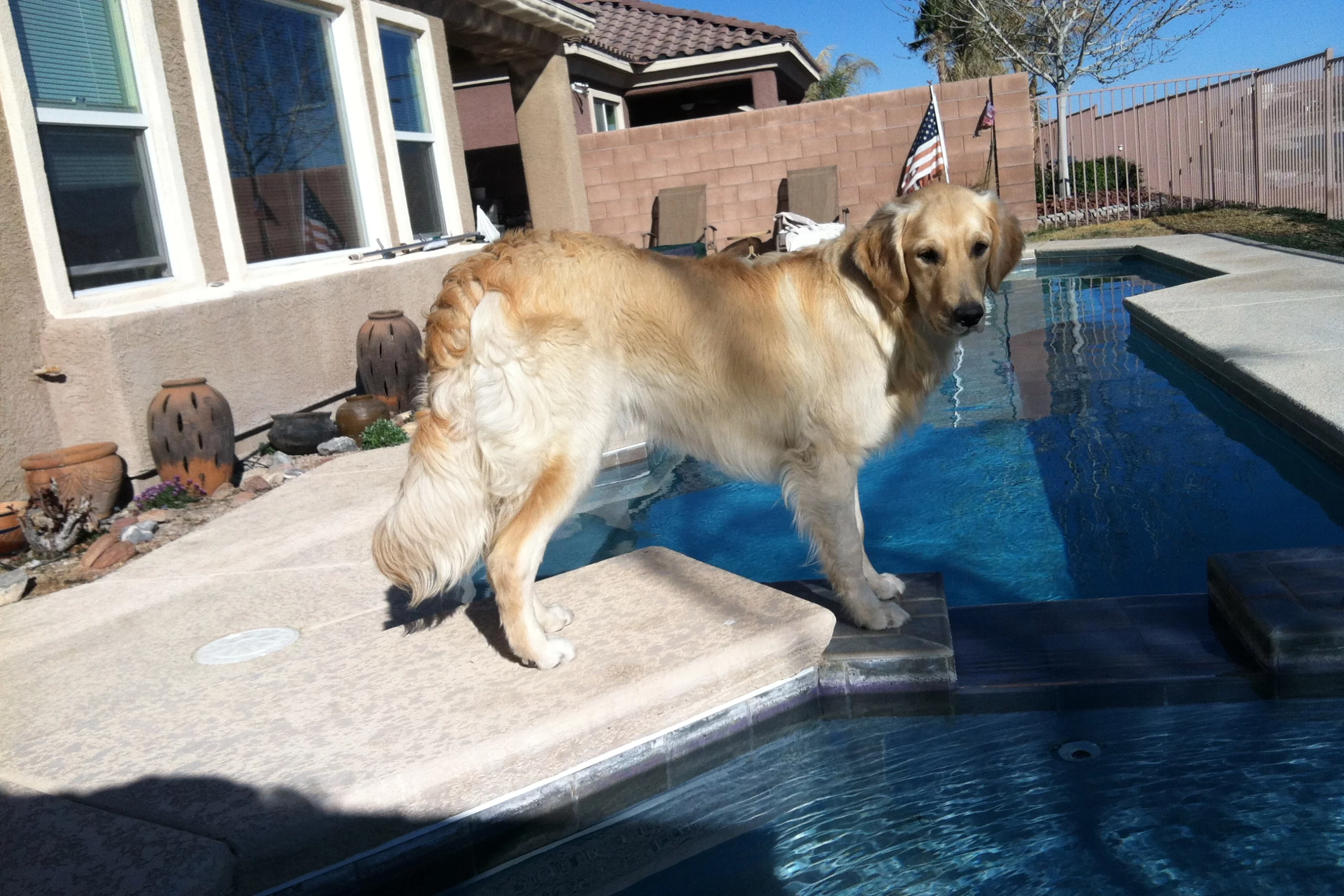
This feather development can vary from dog to dog based on factors such as genetics and overall health.
Each Golden Retriever’s feathers are unique, just like human fingerprints – no two Golden Retrievers have the exact same feathering.
The Transition of Feathers: Puppyhood to Adulthood
The Evolution of Golden Retriever Feathers
Just like kids outgrow their baby clothes, Golden Retrievers also experience significant changes in their coats as they transition from puppyhood to adulthood.
It’s a fascinating journey, marked by notable changes in the length, thickness, color, and texture of their feathers.
- Length and Thickness: As mentioned earlier, Golden Retrievers are born with short and soft coats. As they grow, the fur on certain parts of their bodies – the tail, the back of the legs, and the chest – starts to grow longer, giving rise to feathers. These feathers continue to increase in length and thickness as the puppy matures, eventually reaching their full glory when the dog is about 18 months to 2 years old.
- Color Change: Golden Retrievers’ feathers can also change in color as they grow. Puppies often have lighter coats that darken with age. It’s not uncommon for a light cream puppy to become a rich golden adult.
- Texture Change: Puppy fur is soft and fluffy. As the puppy matures, this soft coat is replaced by an adult coat that is denser and more water-resistant. The feathers, while still softer than the rest of the coat, also become denser and more pronounced.
What to Expect During the Transition
As your Golden Retriever transitions from puppyhood to adulthood, there are a few things you should expect:
- Shedding: When your Golden Retriever is around 4 to 6 months old, you’ll start to notice they are shedding their puppy fur. This shedding period can last up to 2 months and will culminate in the development of an adult coat.
- Maturing Slowly: Unlike some other breeds, Golden Retrievers mature slowly. They might reach their full height by 1 year of age, but their coat, including their feathers, can take up to another year to fully develop.
- Grooming Needs Change: As the feathers grow in, your Golden Retriever’s grooming needs will increase. Regular brushing becomes important to prevent the longer feathers from matting or tangling.
- Feather Care: You’ll also have to start paying more attention to their feathers during your grooming sessions. Checking for ticks, removing debris, and trimming the feathers will become part of your routine.
The transition of feathers from puppyhood to adulthood is an important phase in a Golden Retriever’s life. As pet parents, witnessing this transformation is a wonderful and fulfilling journey.
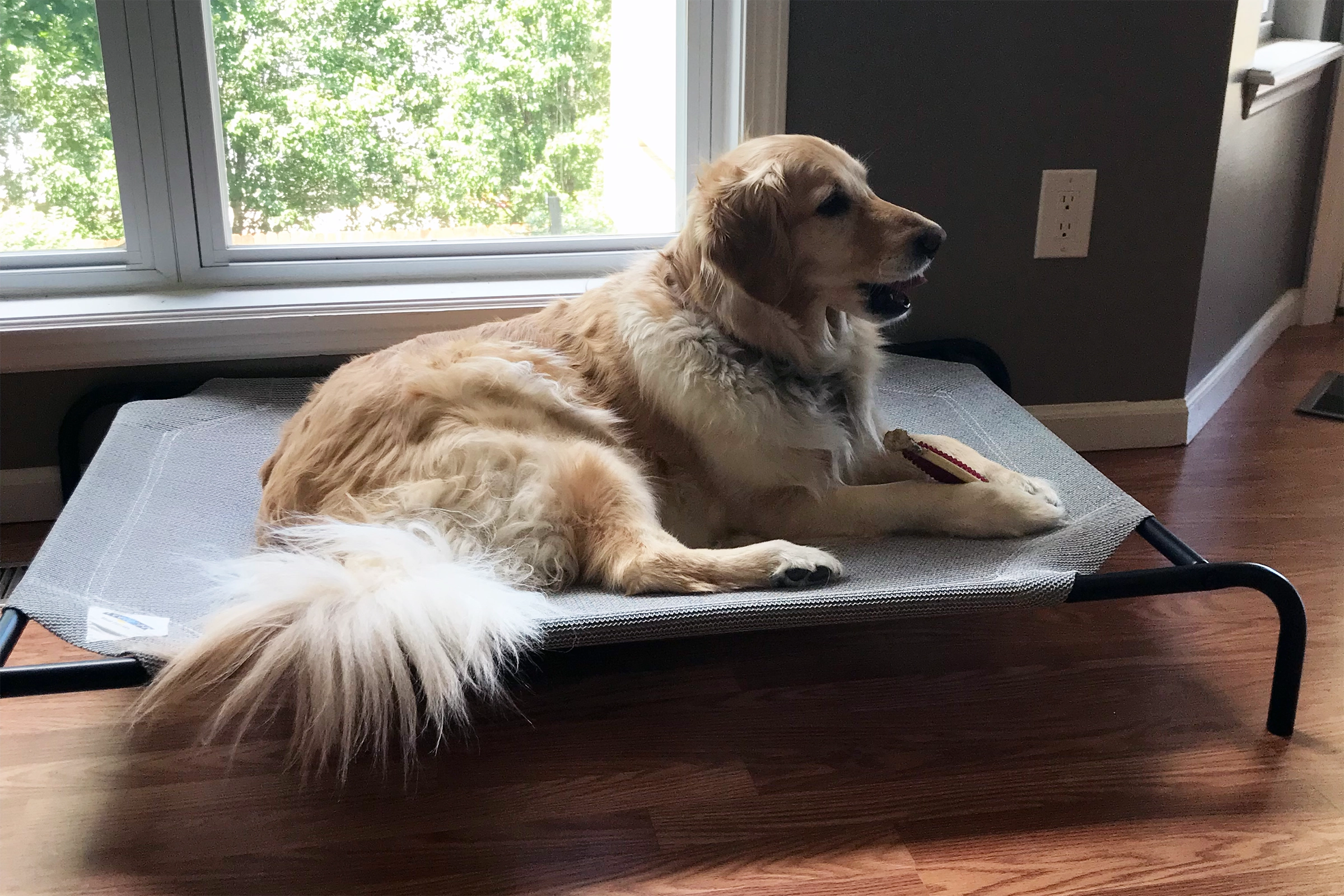
Seasonal Care for Golden Retriever Feathers
The Importance of Seasonal Care
Just like we adjust our clothing according to the season, Golden Retrievers’ feathers require different levels of care throughout the year.
The change in seasons can affect your dog’s coat, making it more prone to matting, tangling, or harboring pesky burrs. Seasonal care is essential to maintain the health, vibrancy, and beauty of their feathers.
Tips for Caring for Golden Retriever Feathers in Different Seasons
Spring:
- Shedding Season: Spring is when Golden Retrievers start to shed their winter coats. Regular brushing becomes paramount during this period to help manage the shedding and prevent matting.
- Watch for Allergens: Spring blossoms can sometimes bring allergies. If your Golden starts to scratch more than usual, a bath with hypoallergenic dog shampoo can help soothe their skin and clean their feathers.
Summer:
- Keep Them Cool: In the summer heat, it’s important to prevent overheating. While their feathers provide some natural insulation, ensure they have plenty of shade and water when outdoors.
- Check for Matts after Swimming: Water-loving Goldens can sometimes get matts in their feathers, especially close to their skin.
- Beware of Burrs: Summer outings can mean more burrs and other nuisances getting caught in their feathers. After each walk, do a quick check and gently remove any debris caught in their coat.
Fall:
- Preparation for Winter: Fall is a transition period where your Golden Retriever will start to grow a thicker coat in preparation for winter. Regular grooming will help keep their feathers looking their best.
- Leaf Hazards: Fallen leaves can hide small objects that can get entangled in your dog’s feathers. A swift brush after outdoor play can help avoid this.
Winter:
- Avoid Matting: Snow and ice can clump up in your Golden Retriever’s feathers, leading to potential matting. Dry them off properly after each outing to avoid this.
- Paw Care: The feathers between their paw pads can collect snow and ice. Keep these areas neatly trimmed to avoid discomfort.
Seasonal care for your Golden Retriever’s feathers not only ensures they stay comfortable but also keeps their coat looking fabulous all year round.
How to Trim and Maintain Golden Retriever Feathers
Trimming Golden Retriever Feathers: A Step-by-Step Guide
Maintaining your Golden Retriever’s feathers includes regular trims. Here’s how to go about it:
- Brush First: Always begin by brushing your dog’s coat to remove any tangles or mats. A slicker brush is a good option for this.
- Use the Right Tools: Invest in a pair of quality dog grooming scissors with rounded tips for safety.
- Start Trimming: Start with the feathers on the legs. Hold the scissors at an angle parallel to the leg, and trim the fur sticking out beyond the line of the leg. Be careful not to cut too close to the skin.
- Tail Feathers: For the tail, trim any fur that’s longer than the tail itself. The goal is to give the tail a neat, fan-like appearance.
- Check Other Areas: Don’t forget the feathers on the chest and belly. These areas don’t usually require as much trimming, but a neatening up can make a big difference.
- Patience and Praise: Be patient and make sure to praise your dog often during the process. This helps them stay calm and associate grooming with positive experiences.
Tips for Maintaining Healthy and Beautiful Feathers
- Regular Brushing: Regular brushing is the cornerstone of feather maintenance. It removes loose hair, prevents tangles and mats, and helps distribute natural oils, keeping the feathers looking shiny and healthy.
- Use a Conditioner: Using a dog-friendly conditioner after bathing can help keep the feathers soft and easy to manage.
- Watch Out for Parasites: Regularly check your Golden Retriever’s feathers for signs of ticks or fleas, especially after walks in wooded areas.
- Healthy Diet: A diet rich in omega-3 fatty acids can help keep your Golden Retriever’s feathers looking their best. Good nutrition contributes to a healthy, shiny coat.
Remember, while trimming is essential, Golden Retrievers are known for their gorgeous feathers, so keep the trimming minimal.
The aim is to tidy up and not to alter their natural, beautiful appearance drastically.
Professional Grooming vs Home Grooming
Deciding between professional grooming and home grooming for your Golden Retriever’s feathers can be a bit challenging. Both options come with their own sets of benefits and drawbacks.
Professional Grooming: Pros and Cons
Pros:
- Expertise: Professional groomers are trained to handle all kinds of dogs and their various grooming needs. They can give your Golden Retriever’s feathers a neat, uniform look.
- Time-saving: Grooming a Golden Retriever can be time-consuming, especially when it comes to trimming feathers. With a professional groomer, you can save time and ensure your dog is groomed thoroughly.
- Additional Services: Many professional groomers offer additional services like nail trimming, ear cleaning, and anal gland expressing.
Cons:
- Cost: Professional grooming can be expensive, especially if you have it done regularly.
- Stress for the Dog: Some dogs can find visiting a groomer stressful, especially if they’re not used to being handled by strangers.
Home Grooming: Pros and Cons
Pros:
- Cost-effective: Home grooming can save you money in the long run, as all you need are some basic grooming tools.
- Bonding Time: Grooming your Golden Retriever at home can be a great bonding experience. It can also be less stressful for your dog, especially if they’re not fond of new people or places.
Cons:
- Requires Skill and Patience: Trimming feathers isn’t difficult, but it requires some skill and patience. You’ll need to learn how to do it correctly to avoid injuring your dog or giving them an uneven trim.
- Time-consuming: Grooming a dog at home, especially a large breed with long feathers like a Golden Retriever, can be quite time-consuming.
Tips for Deciding Between the Two
When deciding between professional and home grooming, consider these factors:
- Budget: If you’re on a tight budget, home grooming may be the better option.
- Time: If you’re short on time or don’t want to invest the time in learning how to groom your dog properly, a professional groomer might be worth the cost.
- Your Dog’s Comfort: Consider your dog’s personality and comfort. If they get anxious around new people or in new environments, they might be more comfortable being groomed at home.
Remember, you don’t necessarily have to choose one or the other.
Many Golden Retriever owners opt for a mix of both – regular home grooming with occasional visits to a professional for a thorough cleanup. This way, your furry friend gets the best of both worlds.
FAQs about Golden Retriever Feathers
Golden Retrievers start to develop their characteristic feathers around the age of 4-6 months. However, the feathers don’t fully grow in until the dog reaches about 18 months to 2 years of age. This varies from dog to dog and can depend on factors such as genetics and overall health.
Yes, Golden Retriever feathers will grow back if they are trimmed or get damaged. However, the rate at which they grow back can depend on several factors, including the dog’s age, diet, and overall health.
The feathering on dogs serves several purposes. Firstly, it provides extra insulation, helping to keep the dog warm in cold weather.
Feathering also helps to protect the dog’s skin from scratches and abrasions during outdoor activities.
Furthermore, in breeds like the Golden Retriever, feathering contributes to their distinctive, attractive appearance.
Wrapping Up All About Golden Retrievers Feathers
Golden Retriever feathers are one of the defining features of this beloved breed. From the early stages of their growth to the full bloom in adulthood, these feathers carry a charm that’s hard to resist.
Whether you choose to trim them at home, opt for professional grooming, or even a combination of both, it’s all about ensuring your Golden Retriever looks and feels their best.
-
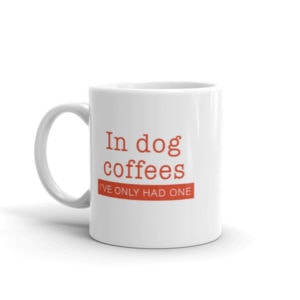
Coffee Mug – In Dog Coffees I’ve Only Had One
$11.95 – $14.95 Select options This product has multiple variants. The options may be chosen on the product page
